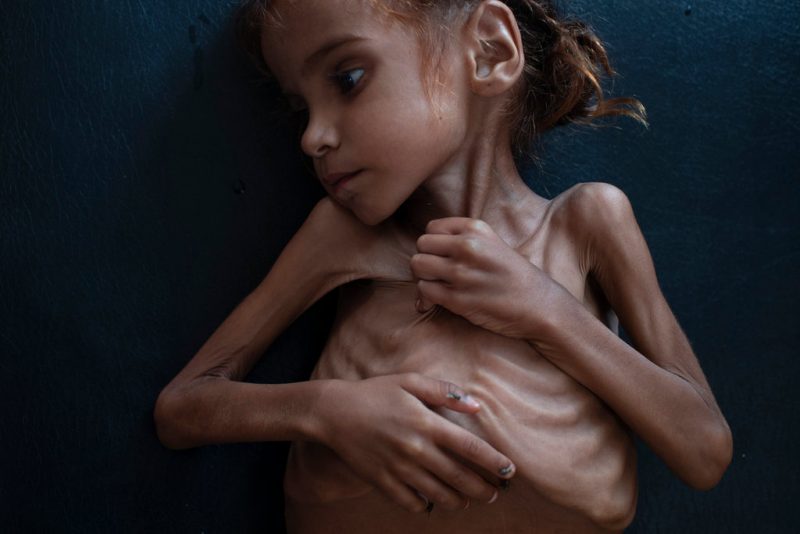
Amal Hussain, who died at age 7. “My heart is broken,” her mother said. CreditCreditTyler Hicks/The New York Times
CAIRO — A haunted look in the eyes of Amal Hussain, an emaciated 7-year-old lying silently on a hospital bed in northern Yemen, seemed to sum up the dire circumstances of her war-torn country.
A searing portrait of the starving girl published in The New York Times last week drew an impassioned response from readers. They expressed heartbreak. They offered money for her family. They wrote in to ask if she was getting better.
On Thursday, Amal’s family said she had died at a ragged refugee camp four miles from the hospital.
“My heart is broken,” said her mother, Mariam Ali, who wept during a phone interview. “Amal was always smiling. Now I’m worried for my other children.”
Riveting images of malnourished Yemenis like Amal — one of 1.8 million severely malnourished children in Yemen — have put a human face to fears that a catastrophic man-made famine could engulf the country in the coming months.
The United Nations warns that the number of Yemenis relying on emergency rations, eight million, could soon rise to 14 million. That’s about half Yemen’s population.
Aid workers and now political leaders are calling for a cessation of hostilities, as well as emergency measures to revive the battered economy of Yemen, where soaring food prices have pushed millions to the brink.
On a trip to Yemen to see the toll the war has taken, we found Amal at a health center in Aslam, 90 miles northwest of the capital, Sana. She was lying on a bed with her mother. Nurses fed her every two hours with milk, but she was vomiting regularly and suffered from diarrhea.
Dr. Mekkia Mahdi, the doctor in charge, sat by her bed, stroking her hair. She tugged on the flaccid skin of Amal’s stick-like arms. “Look,” she said. “No meat. Only bones.”
Amal’s mother was also sick, recovering from a bout of dengue fever that she had most likely contracted from mosquitoes that breed in stagnant water in their camp.
Saudi airstrikes had forced Amal’s family to flee their home in the mountains three years ago. The family was originally from Saada, a province on the border with Saudi Arabia that has borne the brunt of at least 18,000 Saudi-led airstrikes in Yemen since 2015.
Saada is also the homeland of the Houthi rebels who control northern Yemen, and are seen by the Saudi crown prince, Mohammed bin Salman, as a proxy for rival Iran.
The geopolitics of the war seemed distant, however, in the hushed hunger wards in Aslam.
Amal is Arabic for “hope,” and some readers expressed hope that the graphic image of her distress could help galvanize attention on a war in which tens of thousands of civilians have died from violence, hunger or disease. Last year, Yemen suffered the largest cholera epidemic in modern times, with over a million cases.
By Declan Walsh, NYT
This article was originally published by “NYT”
The 21st Century
